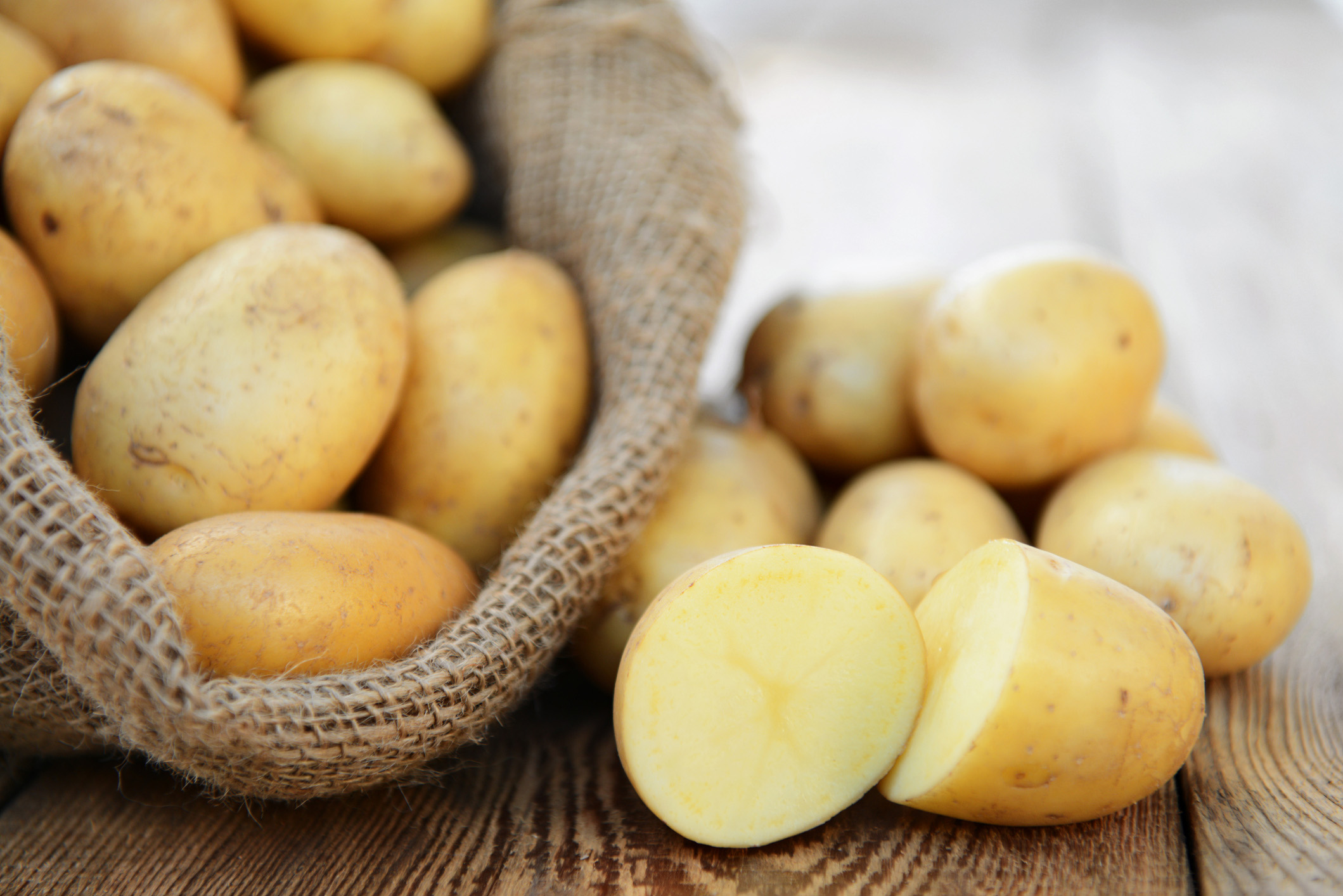People who want to limit their use of sugar may encounter three sets of alternative sweeteners. The first set, the artificial sweeteners, provide no energy and are sometimes referred to as non-nutritive sweeteners. The second set, the sugar alcohols, yield energy and are sometimes referred to as nutritive sweeteners. However, sugar alcohols are not metabolized like regular sugar, thus provide less useable calories than other sugars. Though not included in the two major groups of sugar alternatives, the third group is gaining popularity by the public. This third set is called the no-calorie natural sweeteners.
Artificial sweeteners
The FDA approved acesulfame potassium, also known as acesulfame-K, in 1988. It is a derivative of acetoacetic acid, a synthetic chemical. It is considered to be heat stable and is 150-200 times as sweet as sugar. It is found in dry beverage mixes, instant coffee and tea, gelatins, puddings, chewing gum, candies, baked goods, soft drinks, desserts and, most recently, as a tabletop sweetener. Some researchers believe that acesulfame-K causes tumors in laboratory animals and should not have been approved by the FDA. The ADI (acceptable daily intake) for acesulfame-K is 15 mg/kg body weight.
The FDA developed a scale called the ADI (acceptable daily intake), referring to the amount of a sweetener that individuals can safely consume each day over the course of a lifetime without adverse effects.
Aspartame is a compound of two amino acids (phenylalanine and aspartic acid). It is 180-200 times sweeter than sugar. This artificial sweetener, also referred to as NutraSweet, is not stable at high temperatures. The ADI for aspartame is 50 mg/kg body weight.
Aspartame consists of three components:
1. Phenylalanine – an amino acid necessary for neurotransmitter production. However, pregnant women, those with anxiety attacks, individuals with high blood pressure, people with phenylketonuria and pre-existing pigmented melanoma should avoid its supplementation.
2. Aspartic acid – excess suspected to cause brain damage in fetuses and high doses have been found to destroy brain cells in experimental animals.
3. Methanol – (methyl alcohol, wood alcohol) is converted to formaldehyde and formic acid, which have a toxic effect on the thymus gland. Formaldehyde is a known carcinogen, producing cancer of the throat, pharynx and lung.
America’s obsession with dieting resulted in the popularity of NutraSweet, which currently can be found in more than 4,000 products—everything from toothpaste, instant breakfasts, cereals, multivitamin and mineral preparations, soft drinks and yogurt; the list is virtually endless. Its consumption is as vast as its ubiquity.
The cumulative effects of high dose consumption of aspartame are unknown. The Food and Drug Administration originally approved its use in 1974, but an inquiry regarding possible brain damage led to a postponement of the original approval. The FDA organized an expert board of inquiry, which concluded that the evidence did not support the charge that aspartame consumption could result in brain damage. However, the board recommended that aspartame should not be approved until long-term animal testing could be conducted to rule out the possibility of aspartame-induced brain tumors. The FDA’s Bureau of Foods concluded that the board’s views were unfounded. Aspartame was approved as a sweetener in 1981.
A senior FDA pathologist made a report to the United States Senate hearings held on Aug. 1, 1985, stating that the cancer causing potential of aspartame had been established beyond a reasonable doubt from a number of indications and expressed surprise that there was an apparent refusal by the FDA to invoke the Delaney Amendment to the Food, Drug, and Cosmetic Act for this additive.
Since aspartame has been utilized by the food industry, numerous complaints continue to come into the FDA. Complaints range from anxiety attacks, headaches, mood changes, nausea, vertigo, hyperactivity, arrhythmia, tinnitus, insomnia, gastrointestinal disorders, seizures, blurred vision, muscle cramps, eye problems such as twitching, joint pains, fatigue, slurred speech, PMS and violent episodes.
Presently, some physicians believe that aspartame may aggravate or accelerate Multiple Sclerosis. Others believe that symptoms related to aspartame mimic Multiple Sclerosis so accurately that they recommend holding off on such a diagnosis until a period of abstinence from aspartame is undertaken.
There are a growing number of clinicians and basic scientists who are convinced that a group of compounds called excitotoxins play a critical role in the development of several neurological disorders including migraines, seizures, infections, abnormal neural development, certain endocrine disorders, neuropsychiatric disorders, learning disorders in children, AIDS dementia, episodic violence, Lyme borreliosis, hepatic encephalopathy and, especially, the neurodegenerative diseases such as ALS, Parkinson’s disease, Alzheimer’s disease, Huntington’s disease and olivopontocerebellar degeneration. (Whetsell WO, Shapira NA. Biology of Disease. Neuroexcitation, excitotoxicity and human neurological disease. Lab Invest 1993;68:372-387.) According to author Russell Blaylock, M.D., a practicing, board-certified neurosurgeon, we are witnessing enormous damage to the brain and nervous system due to the ever-increasing amount of NutraSweet added to our foods, which he considers to be an excitotoxic substance. For more information please read Excitotoxins: The Taste That Kills By Russell Blaylock, M.D.
Aspartame has been linked with increased appetite and food intake, thus contributing to weight problems. Speculation suggests that the sweet taste triggers an insulin response by the pancreas and because there are no carbohydrates present, insulin lowers blood sugar and appetite increases. This also can contribute to hypoglycemia. The amino acids phenylalanine and aspartic acid also stimulate the secretion of insulin.
According to the New England Journal of Medicine (1983, 429-430), aspartame can greatly imbalance levels of other amino acids and neurotransmitters in the brain. One example is a decrease in tryptophan availability and reduction in serotonin levels, resulting in depression.
Because of the fact that aspartame contains phenylalanine, products containing this artificial sweetener must bear a warning label for people with the inherited disease phenylketonuria (PKU). Individuals with PKU are unable to dispose of any excess phenylalanine. The accumulation of phenylalanine and its by-products are toxic to the developing nervous system, causing irreversible brain damage. For this reason, all newborns in the United States are screened for PKU.
Aspartame is leaving a bitter taste in the mouths of researchers, some of whom believe that the FDA should recall this artificial sweetener to prevent further complications from occurring.
Alitame is a compound of two amino acids (alanine and aspartic acid). It is 2,000 times sweeter than sugar. Apparently alitame is heat stable and water soluble. Alitame has an aftertaste when used in acidic foods heated at high temperatures. This artificial sweetener is awaiting approval by the FDA.
Cyclamate contains cyclamic acid, calcium cyclamate and sodium cyclamate. This artificial sweetener has been battling safety issues since 1949, the year it was originally approved by the FDA. However, it was banned in 1969 because of research showing that it caused bladder cancer in rats. The FDA recommended further research to determine the risks for long-term use. Although cyclamate may not initiate cancer, it may promote cancer development once started. The FDA has no policy on substances that enhance the cancer causing activities of other substances. Cyclamate is awaiting approval by the FDA. Agencies in more than 50 other countries, including Canada, have approved cyclamate.
Neotame is a synthetic sweetener developed by the Monsanto Company, the maker of aspartame. In 1998, Monsanto submitted an application to the FDA to market neotame as a tabletop sweetener as well as a sweetening ingredient in foods and beverages. The FDA approval process is expected to last two to three years. Neotame currently is listed as 8,000 times sweeter than sugar.
Saccharin is an organic compound that was discovered in 1879. It is 300-400 times sweeter than sugar. It is heat stable, colorless and odorless but does have a bitter, metallic aftertaste. Saccharin can be found in soft drinks, gum, toothpaste and various dietetic foods. You may recognize it on the label of Sweet ‘N Low packets, along with the following warning: “Use of this product may be hazardous to your health. This product contains saccharin which has been determined to cause cancer in laboratory animals.” Research since 1981 has demonstrated the cancer causing effects of saccharin, yet it currently is on the FDA’s GRAS list (generally recognized as safe).
Sucralose is a chlorinated sugar derivative that is 400-800 times sweeter than sugar. It seems to be heat stable and water-soluble. It is sold under the brand name Splenda. Recently approved by the FDA, it can be found in carbonated beverages, dairy products, baked goods, coffee and tea, fruit spreads, syrups, tabletop sweeteners, chewing gum, frozen desserts and salad dressings. Its use has been linked with diarrhea and abdominal cramping.
Sugar alcohols
Sugar alcohols are sugar-like compounds that can be derived from fruits or commercially produced from dextrose. They are broadly referred to as polyols. Like sugars, sugar alcohols are sweet to taste and yield 4 calories per gram, but they are absorbed more slowly, are only partially utilized, and metabolized differently from other sugars. One bonus is that they are not readily utilized by ordinary mouth bacteria and may actually help prevent tooth decay. The most common sugar alcohols are sorbitol, which is half as sweet as sugar; mannitol and maltitol, which are three-fourths as sweet as sugar; and xylitol, which is equivalent to the sweetness of sugar. The last sugar alcohol, xylitol, is beneficial as a nasal spray as well as chewing gum, the former to prevent sinusitis and ear infections of a bacterial nature, and the latter for tooth decay and ear infection prevention. The downside is that all sugar alcohols are associated with abdominal cramps, gas, diarrhea and bloating.
No-calorie natural sweeteners
Stevia is a no-calorie herbal sweetener derived from a plant in the daisy family that grows in South America. Actually there are at least 150 species of stevia in North and South America. Stevia rebaudiana was isolated as the sweetest of all the stevia plants after a study of 110 species of the stevia plant in 1982. It is 200-300 times sweeter than regular sugar, heat stable and has been consumed in many countries around the world for decades. When first developed, the green extract of the stevia plant was sweet, but had a strong licorice aftertaste. Japanese researchers isolated the sweetest part of the stevia plant (stevioside crystals), which are white in appearance and without the licorice aftertaste. The FDA considers stevia a dietary supplement and not a sweetener.
Another little-known natural sweetener is an extract of the kiwi fruit. Currently one company is marketing it in sugar-like packets under the name Opti-Sweet. It is heat stable and seems to be half as sweet as sugar.
References:
Congressional Record-Senate. Aspartame Safety Act of 1985. August 1, 1985, pp.S10820-10847.
“Position of the American Dietetic Association: use of nutritive and nonnutritive sweeteners,” Journal of the American Dietetic Association 93 (1993): 816-821.
H. H. Butchko and K. N. Kotsonis, “Acceptable daily intake vs. actual intake: the aspartame example”, Journal of the American College of Nutrition 10 (1991): 258-266.
D. J. Canty and M. M. Chan, “Effects of consumption of caloric vs. noncaloric sweet drinks on indices of hunger and food consumption in normal adults,” American Journal of Clinical Nutrition 53 (1991): 1159-1164.
J. Bonet, Undigestible sugars in foods products, American Journal of Clinical Nutrition 59 (1994): 763S-769S. James F. Balch, M.D., Phyllis A. Balch, CNC., Prescription For Nutritional Healing. (New York: Avery Publishing, 1990).
Marc Sorenson, ED.D., Mega Health. (New York: M. Evans and Company, Inc., 1995).
Ralph Golan, M.D., Optimum Wellness. (New York: Ballantine Books, 1995).
Ruth Winter, M.S., Poisons In Your Food. (New York: Crown Inc., 1991).






